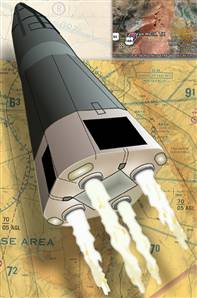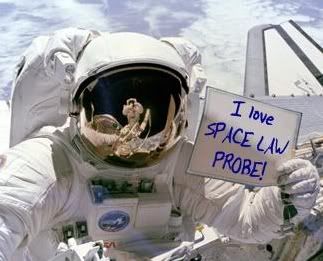7.26.2006
Planet Bezos, West Texas
 Who knew West Texas ranchers would be such fans of personal spaceflight? Indeed, looks like Amazon billionaire Jeff Bezos picked a super spot for his private suborbital spaceport.
Who knew West Texas ranchers would be such fans of personal spaceflight? Indeed, looks like Amazon billionaire Jeff Bezos picked a super spot for his private suborbital spaceport.Alan Boyle showed up in Van Horn for yesterday's FAA environmental assessment hearing for Blue Origin, and reports, "nary a discouraging word was heard." Read his very interesting coverage which includes background on the venture. (MSNBC.com)
And if you haven't treated yourself to it already, here is the 229-page Draft Environmental Assessment for the Blue Origin West Texas Commercial Launch Site.
Alan has details here.
As we have learned, Blue Origin is seeking "to launch space flight participant-carrying RLVs on suborbital, ballistic trajectories to altitudes in excess of 99,060 meters (325,000 feet) above mean sea level." To do this, Blue Origin will "construct a private launch site, including a vehicle processing facility, launch complex, vehicle landing and recovery area, a space flight participant training facility, and other minor support facilities" on Bezos-owned land in Culberson County, Texas. "Operations at the launch site would include pre-flight processing, launch, flight, landing, and recovery activities." Thus, Blue Origin needs FAA experimental permits, a launch site operator license, RLV mission-specific licenses, and/or RLV operator licenses, as appropriate.
Lest we ever forget, issuing permits and licenses are federal actions and are subject to review as required by the National Environmental Policy Act (NEPA) of 1969, as amended, 42 United States Code (U.S.C.) § 4321, et. seq. Hence the EA. And I did enjoy the hefty document, not just for the description of Blue Origin's plans and its New Shepard RLV, but also the insight into southwestern Texas flora and fauna.
Really, where else will you read that, "[t]wo black-tailed prairie dog colonies occur in the vicinity of the launch site." And, a "small cave located along the eastern side of the limestone ridge in the west-central portion of the surveyed site contained a small colony of bats during the April 2005 survey." Among his new neighbors Jeff may count the common black hawk, gray hawk, Mexican spotted owl, Southwestern willow flycatcher, yellow-billed cuckoo, zone-tailed hawk, Chihuahuan mud turtle, mountain short-horned lizard, Guadalupe Mountains fescue, gypsum wild buckwheat, lots more. And no fish.
(And if the FAA ever gets tired of licensing commercial space business, it can go teach history to billionaire book peddlers. Jeff will love the agency's finding that, "The Paleo-Indian period in the [proposed spaceport] region, dating from approximately 10,000 to 6000 B.C., is characterized by small, mobile bands who subsisted on hunting large mammals such as mammoth and bison." And the "Archaic period is generally characterized by broad-spectrum hunting and gathering by small groups that traveled seasonally throughout the year within large territories." Fascinating. And apparently, surprisingly, no suborbital space ventures, until now.)
By the way, as the FAA notes in the EA, in addition to FAA licenses or permits, Blue Origin needs "a variety of Federal, state and local permits, licenses and approvals." But of course.
And if you have comments for the FAA, send them to FAA environmental specialist Doug Graham at BlueOrigin@icfi.com.
And if you find you've developed a bit of a taste for spaceport environmental assessments, (they sure can be addicting,) dig in to 279-page Final Environmental Assessment for the Oklahoma Spaceport.
So yes, go ahead, mess with space. But don't mess with Texas.
And never mess with the FAA.






